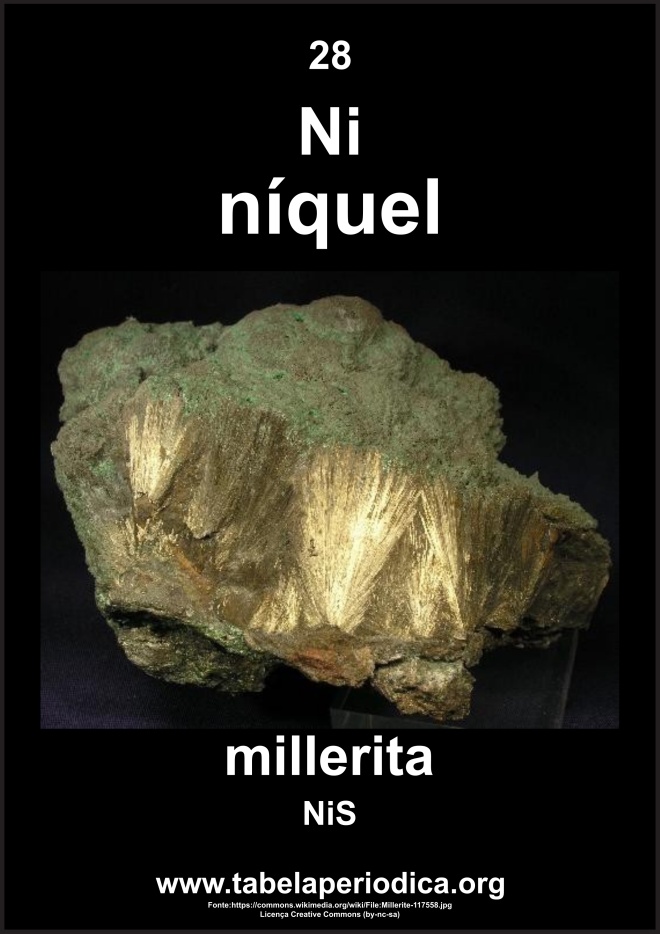Imagem em formato PDF.
Quando encontrada em uma quantidade adequada o mineral millerita pode ser uma fonte para a obtenção do níquel.
Pode se formar em temperaturas relativamente baixas, de 200°C, e normalmente é encontrada em cavidades de rocha calcária ou dolomita. Também pode ser encontrada em alguns tipos de meteoritos e no Monte Vesúvio, na Itália.
Recebeu este nome por uma homenagem ao mineralogista britânico William Hallowes Miller.
Amostra de millerita.
View this post on Instagram
An American classic! Dug out this fine specimen that was collected in the mid 19th century. This is Millerite, nickel sulphide and came from the old Sterling mine, Near Antwerp, New York. This old iron mine closed in 1910 and was at its end a huge open pit 500 by 200 feet and 115 feet deep with underground workings to 200 feet. The iron ore was relatively soft and occasional cavities were found containing the millerite. Just look how it occurs as fine radiating groups or ‘tufts’ of super fine capillary (needle like) crystals, lustrous and golden in colour. Millerite can usually occur like ‘dusty cobwebs’ of crystals, but these are so beautiful, especially their form and being set off by the shiny black specular hematite lining the cavity and itself against the bright ‘ochreous’ reddish matrix. There is a magnificent example in the Smithsonian Institution that is regarded as the best of species. I have seen a few of these and they are often dull, the reason being this kind of specimens worst enemy, dust! Some specimens are hard to clean when invested with dust particles, but this one has been covered and kept in the drawer (and dark) for close to 160 years. Must have been such fun breaking the ore waiting for an elusive cavity to appear | NHM London collection |! #minerals #mineralogy #geology #geologypage #museumcollection #conservation #preservation #millerite #golden #radiating #millerite #fineminerals #rockhound #collecting #usa #whyiloveminerals #americanclassic #instagood #nhm_minerals
A post shared by Alan Hart BSc FGA DGA (@alandhart) on Jan 20, 2019 at 9:09am PST
Versão com fundo branco
Imagem em formato PDF.
Texto escrito por Prof. Dr. Luís Roberto Brudna Holzle ( luisbrudna@gmail.com ). Universidade Federal do Pampa – Licenciatura em Química.





